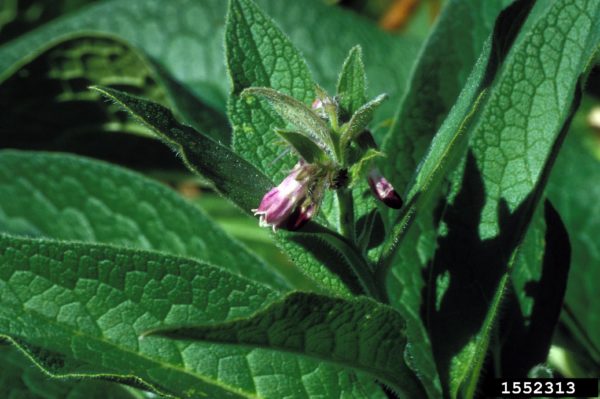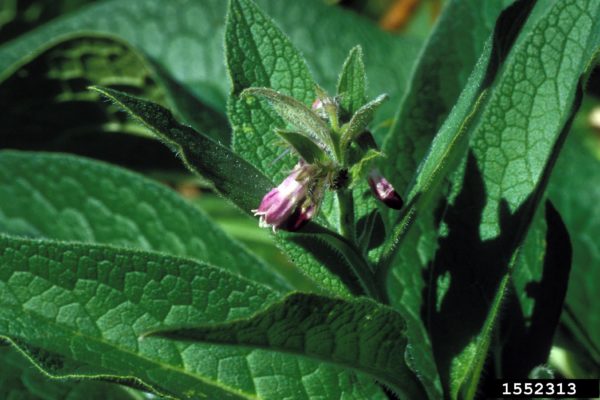Common comfrey
Warning
Toxic to livestock and humans
About This Species
Common comfrey is an herbaceous, perennial plant that is native to western Asian and Europe. It was likely deliberately introduced as a medicinal crop. It can be found growing in shady, rich soils near riparian areas or in roadside ditches. It primarily reproduces vegetatively and is notoriously difficult to remove due to its tendency to sprout whole plants from small root fragments. Its large taproot allows it to bioaccumulate nutrients in the soil and outcompete native plants.
How to Identify
Common comfrey can grow quite large and range in height from 0.6-1 m with a bristly stem.
Flowers are drooping and hang like bluebells. Flowers range in color from white to light purple (and may be striped) and appear in the summer months.
Its leaves are 15-30 cm long, egg-shaped or oblong pointed and fuzzy.

Take Action
Prevention is the best approach.
-
If you need advice about invasive species on your property or you are concerned about reported invasives in your local area, contact your local government or regional invasive species organization.

Plantwise
Learn about best practices
Prevention is the best approach. If you have an infestation of comfrey in your area, repeated mowing prior to flowering can help minimize the spread of this plant. Herbicides are also an option.
A few non-invasive alternatives to plant instead of Common comfrey include:
- Anise-scented sage (Salvia guarantica)
- Berggarten sage (Salvia officinalis 'Berggarten')
- Common harebell (Campanula rotundifolia)
- Lamb’s ear (Stachys byzantina)
- Lungwort (Pulmonaria officinalis)
REPORT TO PROTECT BC’S BIODIVERSITY

Use the app
Observe and report to protect BC’s biodiversity

Report through this website
Use our form to tell us what you’re seeing and where.

















